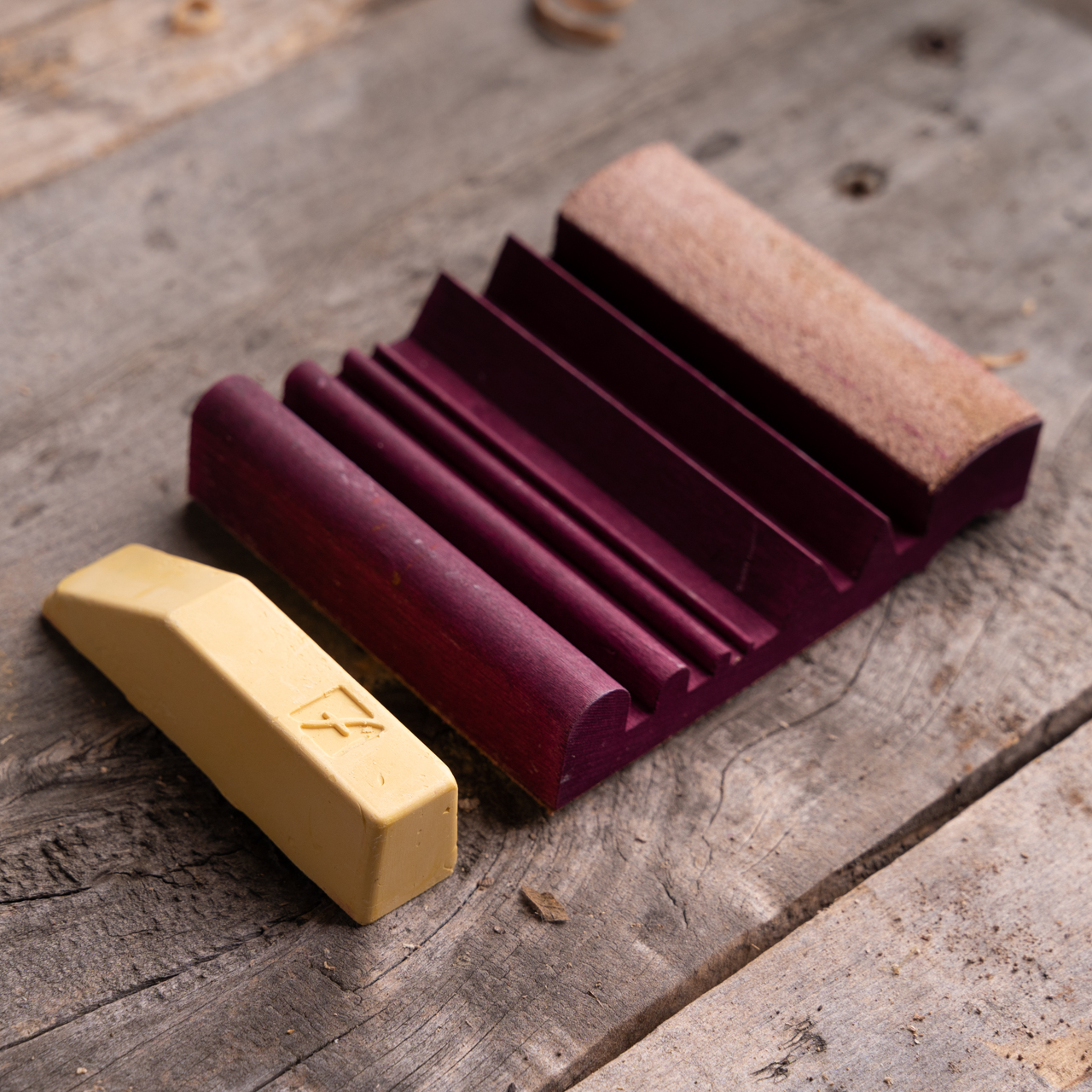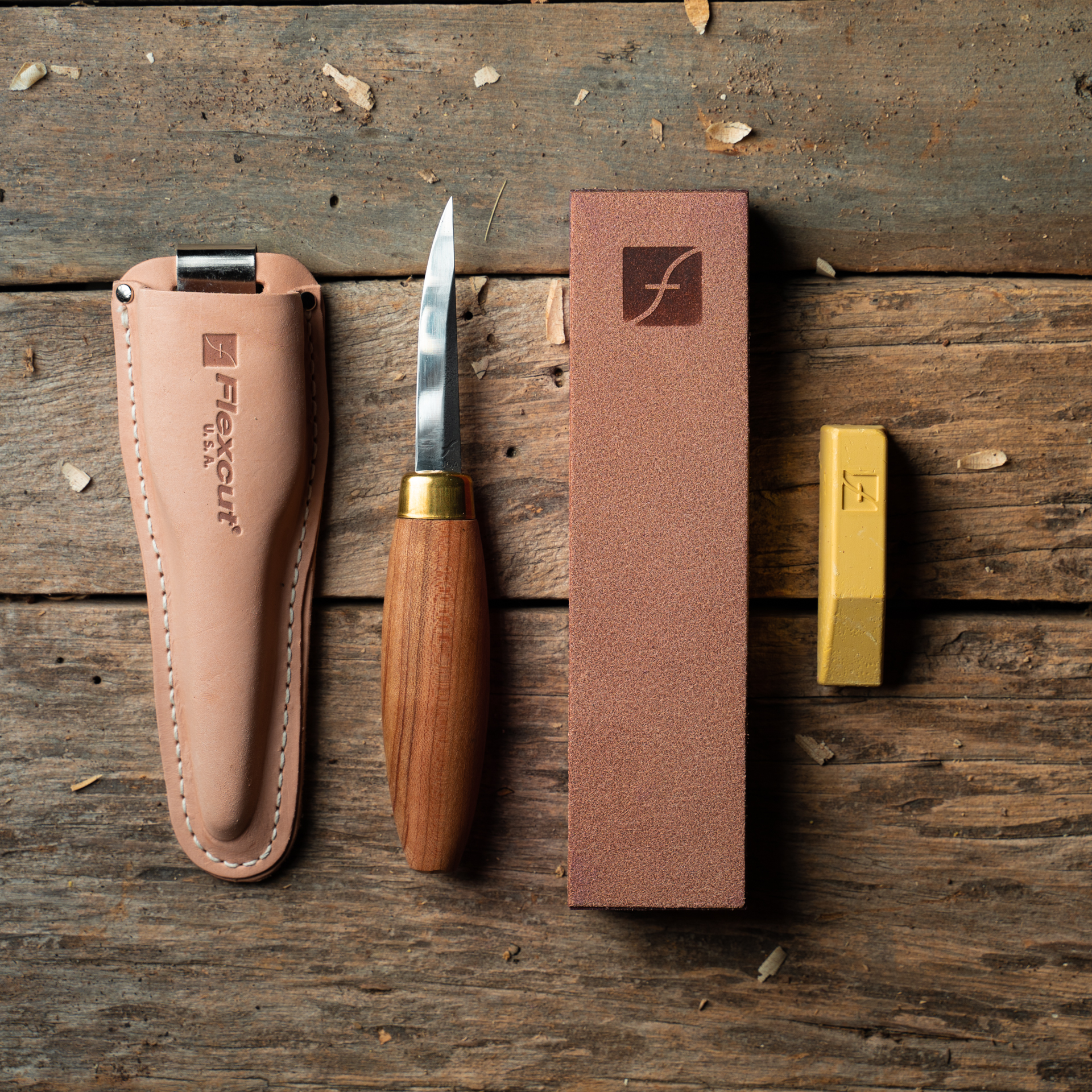Sharpening Your Tools
Sharpening your Tools
Your Flexcut Carving Tools are pre-sharpened at the factory to a highly polished razor's edge. This creates an efficient, long-lasting cutting tool. The more polished the edge, the sharper it is and the longer it will stay sharp. Keeping your tools sharp requires some routine maintenance.
This can most easily be done by periodically stropping both sides of the edge (outside and inside) with a Flexcut SlipStrop™ and Flexcut Gold™ Polishing Compound. Sharpening stones should not be used for this routine maintenance. They are too coarse and will put scratches in the polish, reducing the sharpness.
The Flexcut SlipStrop™ is designed with the inside profiles molded into it, so that stropping the inside edge can be done quickly. It can also be flipped over to accommodate the outside of the edge as well.
Stropping your tools
The outside edge
Use the flat leather side of the strop. The bevel of the tool should be placed as flat against the strop as possible. The tool is then pulled away from the edge to avoid digging into the strop.
Gouges should be rolled as they are pulled so as to polish the entire edge. Using the molded coves of the strop will polish the tool more evenly because more of the edge is in contact with the strop.
If the angle of the bevel against the strop is too high, it will round prematurely. If it is too low, the edge will not be properly abraded.


Stropping the inside edge
Find the strop profile that most closely fits the inside of your gouge or V-tool. If the strop profile doesn't fit the exact shape of the tool, use the largest radius or angle that will fit the entire depth of the cutting edge.
Tilting the tool while it is stropped creates a slight secondary bevel on the inside of the tool to give the edge more durability and remove any burr. Stropping frequency depends on how hard or abrasive the material is that's being carved. When the tool begins to feel as if it's dragging through a cut, the tool should be stropped a number of times until the sharpness is restored.
Due to the cushioning effect of the wood or leather strop, each time the tool is stropped, the edge becomes slightly rounded. Eventually it will become so rounded that it no longer has an efficient cutting angle.
To recognize this, check the angle at which the tool begins to cut in relationship to the surface of the work. When the angle is too high, the force being exerted on the tool is directed improperly. The force should be directed horizontally through the work and not vertically into it.
If the angle is too vertical, the tool needs to be reshaped using an abrasive wheel to flatten the bevel back to its original angle. The edge should always be re-polished to restore its sharpness and longevity.